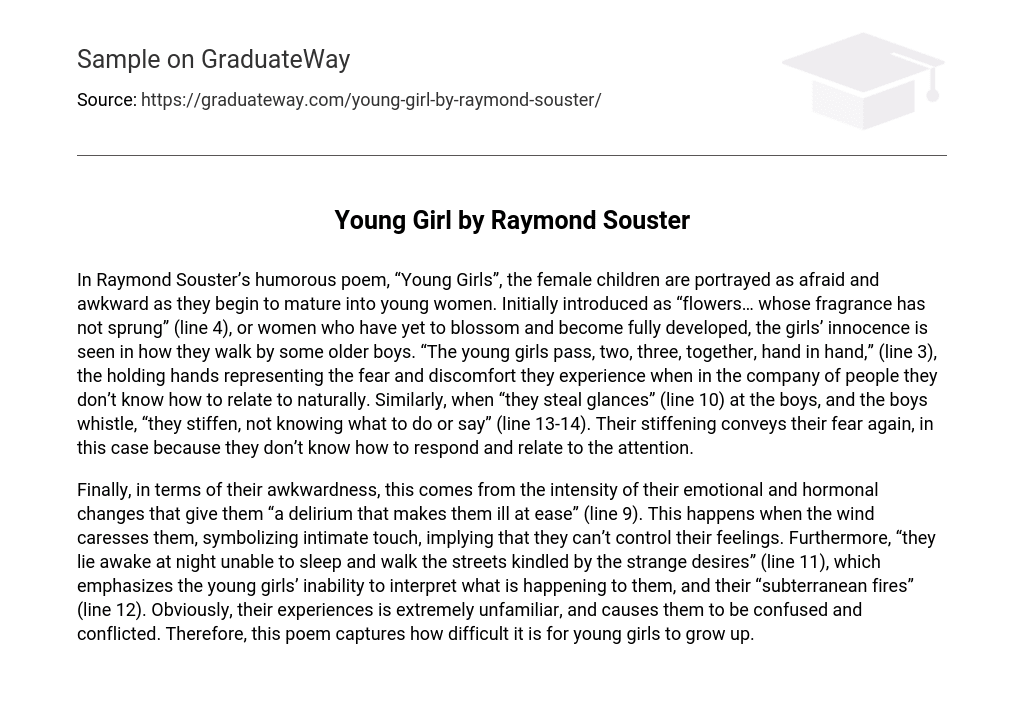In Raymond Souster’s humorous poem, “Young Girls”, the female children are portrayed as afraid and awkward as they begin to mature into young women. Initially introduced as “flowers… whose fragrance has not sprung” (line 4), or women who have yet to blossom and become fully developed, the girls’ innocence is seen in how they walk by some older boys. “The young girls pass, two, three, together, hand in hand,” (line 3), the holding hands representing the fear and discomfort they experience when in the company of people they don’t know how to relate to naturally. Similarly, when “they steal glances” (line 10) at the boys, and the boys whistle, “they stiffen, not knowing what to do or say” (line 13-14). Their stiffening conveys their fear again, in this case because they don’t know how to respond and relate to the attention.
Finally, in terms of their awkwardness, this comes from the intensity of their emotional and hormonal changes that give them “a delirium that makes them ill at ease” (line 9). This happens when the wind caresses them, symbolizing intimate touch, implying that they can’t control their feelings. Furthermore, “they lie awake at night unable to sleep and walk the streets kindled by the strange desires” (line 11), which emphasizes the young girls’ inability to interpret what is happening to them, and their “subterranean fires” (line 12). Obviously, their experiences is extremely unfamiliar, and causes them to be confused and conflicted. Therefore, this poem captures how difficult it is for young girls to grow up.





